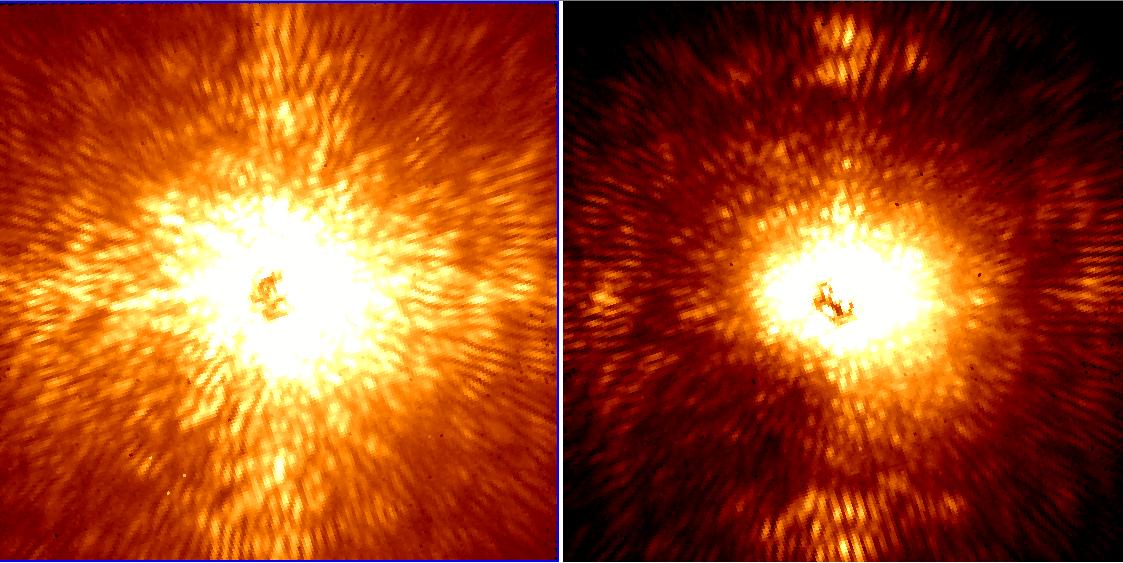Using ‘Dark Holes’ to Spot Planets
Caption:
These two images show HD 157728, a nearby star 1.5 times larger than the sun. The star is centered in both images, and its light has been mostly removed by an adaptive optics system and coronagraph belonging to Project 1640, which uses new technology on the Palomar Observatory's 200-inch Hale telescope near San Diego, Calif., to spot planets. The remaining starlight leaves a speckled background against which fainter objects cannot be seen. On the left, the image was made without the ultra-precise starlight control that Project 1640 is capable of. On the right, the wavefront sensor was active, and a darker square hole formed in the residual starlight, which will allow objects up to 10 million times fainter than the star to be seen. Images were taken on June 14, 2012. Researchers and engineers behind the project come from the American Museum of Natural History in New York, N.Y., the California Institute of Technology in Pasadena, and NASA's Jet Propulsion Laboratory, also in Pasadena.
Cataloging Keywords:
| Name |
Value |
Additional Values |
| Target |
HD 157728 |
|
| System |
HD 157728 |
|
| Target Type |
Exoplanet |
|
| Mission |
|
|
| Instrument Host |
|
|
| Host Type |
|
|
| Instrument |
Adaptive Optics System and Coronagraph |
|
| Detector |
|
|
| Extra Keywords |
Color |
| Acquisition Date |
|
| Release Date |
2012-07-09 |
| Date in Caption |
2012-06-14 |
|
| Image Credit |
Project 1640 |
| Source |
photojournal.jpl.nasa.gov/catalog/PIA15807 |
| Identifier |
PIA15807 |

